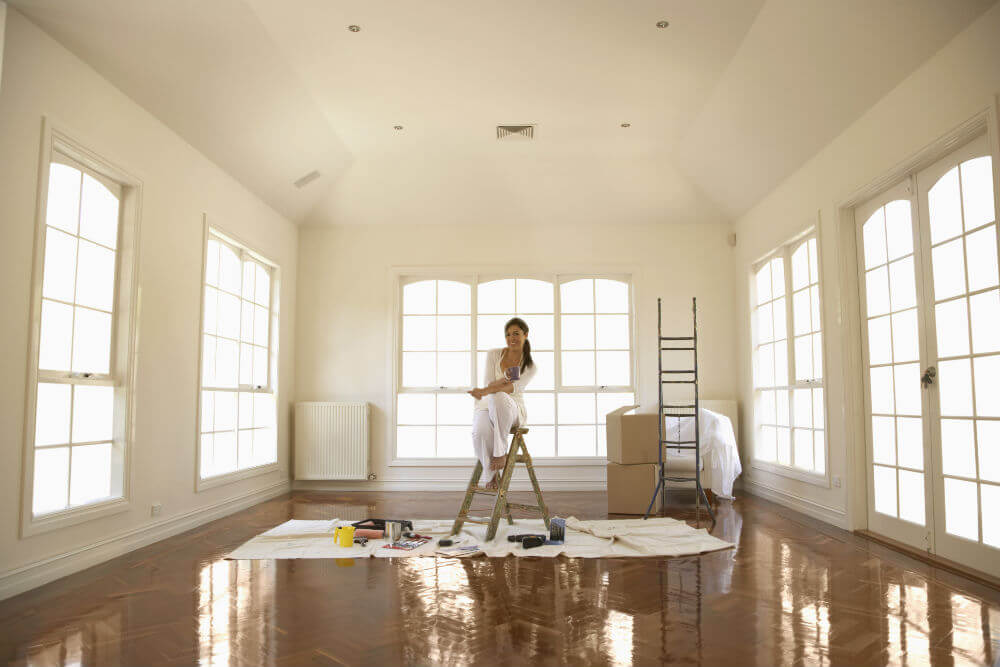Home renovations that pay off
Saving money boils down to realistic planning
Advertisement
Saving money boils down to realistic planning


If you rush home to watch every PVR-saved episode of HGTV’s real estate porn and you’ve never lived through a renovation, then you’re probably living in a fantasy world where every designer kitchen costs less than $20,000 and all home renovations add tens of thousands to the value of your home.
Spoiler alert: It doesn’t work this way.
Renovating and remodelling are very costly ventures. Yet, because of the surge of home decor shows too many home owners earnestly believe that a reno will instantly add value to their home. The problem is that even when a renovation adds value, you cannot count on a $1 returned for every dollar spent.
To help you make better financial choices, here are four tips to help you plan home renovations that pay off.
While it’s not sexy, the most cost-effective way to add value to your home is to simply fix what needs to be repaired first. Focus on fixing the areas or items that are in desperate need of attention will actually provide the best return on investment for your renovation budget. For example, fixing a leaking roof, replacing broken kitchen tile and rewiring faulty electrical outlets (get professional help on this one) add value even if they don’t look sexy.
Do you know someone who underwent a major renovation? If you do, I sincerely hope their plan was to stay in the home for five years or more. While there are justifiable reasons to renovating before moving these reasons can’t rely solely on the idea that a renovated kitchen or bathroom will add value to the home. They will, but not on a $1 for $1 basis. Unfortunately this “add value” rationale becomes the sole justification for undertaking this type of work—and is the number one culprit for homeowner debt. This doesn’t mean you shouldn’t take on renovations. It just means you need to carefully consider the reasons for the renovating, and take time planning the renovation. As my husband constantly reminds his clients: Changes cost money. That’s not because contractors aren’t sympathetic to evolving needs or desires, but because renovating and building is like a gigantic Lego game: every piece impacts the integrity of the whole and every change can compromise the budget, integrity and timeline of a project. So consider what you currently need and what your future needs may be and then plan your renovation on these needs.
When a former colleague decided to add a second floor on her East York home, my only question was: “Are you planning to stay for awhile?” That’s because larger renovations, such as second-floor or back additions, are time-consuming and costly. That means from a purely price perspective, it’s wiser to remodel and upgrade the structure you already have. However, with more and more families squeezing into pre-War bungalows or older and smaller family homes, the need for space becomes paramount. Before reaching for you cheque-book, however, make sure you maximize your current footprint. Consider paying a professional organizer to determine if you’re using your current space to maximum potential. If, after you’ve decluttered and reorganized, you still find there’s not enough room, and you’ve saved up the money, only then should you consider a major renovation such as an expansion on your home.
 Want even more tips to shape up your finances? Join the Money Fit Club to curb spending, boost your earnings, lower your taxes and more!
Learn to tone your money muscles all year long with our interactive calendar and sign up for our weekly newsletter for advice straight to your inbox.
Want even more tips to shape up your finances? Join the Money Fit Club to curb spending, boost your earnings, lower your taxes and more!
Learn to tone your money muscles all year long with our interactive calendar and sign up for our weekly newsletter for advice straight to your inbox.
More than a desire to minimize your carbon footprint, going green in your reno can also put money back in your wallet. By renovating for maximum heat and energy efficiency you can save hundreds, even thousands on your heating, electricity and water bills. Better yet, there are often tax breaks for undertaking this type of renovation. One Toronto-based architect, who bought a century home in the city’s vibrant Little Italy neighbourhood, opted to go this route. Since his plan was to gut the entire house and rebuild everything, he forked out $600 for an Energy Audit even before the renovations began. By completing the audit recommendations—which included new insulation, furnace and windows—he was able to get almost $9,000 back in rebates. “It was a lot of paper work and I had to provide receipts and invoices to prove I did the work,” he explains, “but the work was already been done, it was just a matter of making sure everything was compliant to energy efficiency standards.”
The problem with the Energy Audit rebates is that you first have to pay for a test—ranging from $100 to $800, depending on your city, your home and the company you use—before you can find it if you qualify for rebates and by how much. However, there are other programs intended to help home owners battle energy consumption in the home. For instance, in March 2014, Toronto launched its $10-million pilot Home Energy Loan Program (HELP). The program individual property owners to borrow money from the city for “energy works”—almost any project that includes insulation, air sealing, windows and doors, high-efficiency furnaces or boilers, central air conditioners and water heaters. The homeowners then repay these loans through a special charge on their tax bill. According to Marco Iacampo, environment policy supervisor at the City of Toronto, rates for these energy works loans start at 2.5% for a five-year loan and increase to 3.75% for 10 year loan. The 15-year rate is 4.25%. Also, if you decide to sell the home, the loan can be transferred to the new owner since it’s attached to the property, not the borrower. At present, another 22 municipalities are considering launching the program. For more information on the Toronto program go to the city’s website.
In Vancouver, single family home and row houses were eligible for rebates through the LiveSmart program but only up until March 31, 2014. Still B.C. homeowners can still apply for B.C. Hydro rebates, which include as much as $2,800 back for insulation upgrades and up to $500 in draftproofing upgrades. For more information on these and other rebates go to their website. Albertans should go to the EnergyWise Home Solutions website to find out how they can qualify for up to $12,00 in federal and provincial grants to make your home more energy efficient. In Saskatchewan, there are no current retrofit rebate programs for existing home owners, however, all home owners can qualify for the Energy Star loan program (which allows you to finance an Energy Star qualified appliance at prime + 2%, on all approved credit). In Manitoba there a number of rebates and loan programs, including the Affordanle Energy Program (that helps lower income households become more energy efficient), Home Insulation Programs (that offer rebates) and PAYS Financing (which offers extended term financing for energy efficiency upgrades). For all of these programs go to the Manitoba Hydro website. Residents in PEI can find rebate information here, while Newfoundland and Labrador residents can find information on the Take Charge! website At present there are no rebate programs specific to Nova Scotia, New Brunswick, or Quebec but residents can qualify for federal energy rebates. Like Romana King’s Home Owner on Facebook » Up your home reno game Go to: How to avoid a home renovation nightmare Go to: Home renovation reality check Go to: Is your reno really an investment? Go to: How to plan next year’s bathroom renovationShare this article Share on Facebook Share on Twitter Share on Linkedin Share on Reddit Share on Email